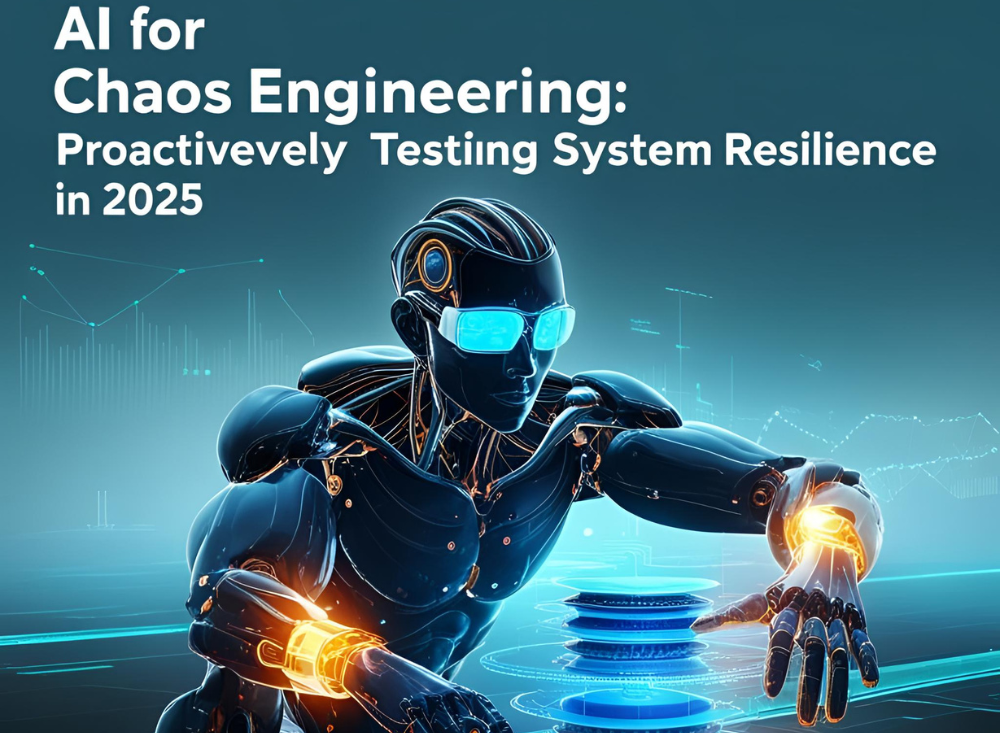
Using Genqe.ai to Fortify Your Digital Infrastructure
In 2025, ensuring the resilience of software systems is not a luxury — it’s a necessity. As businesses scale across cloud-native architectures, microservices, and hybrid environments, unexpected failures are inevitable. That’s where chaos engineering steps in — an approach that proactively injects controlled failures to uncover weaknesses before real users are impacted.
Now imagine blending chaos engineering with artificial intelligence. That’s the innovation Genqe.ai is bringing to life.
The New Era of Resilience Testing
Traditional testing verifies what systems should do under normal conditions. Chaos engineering, on the other hand, validates how systems behave when everything goes wrong — from network outages to database crashes.
By combining this discipline with Genqe.ai AI-powered testing automation, teams can simulate complex failure scenarios, gather intelligent insights, and rapidly improve system robustness.
Why Genqe.ai for Chaos Engineering in 2025?
AI-Driven Fault Injection
Genqe.ai enables users to model chaos experiments intelligently. Its AI engines analyze application architectures, traffic patterns, and dependencies to identify optimal weak points to target with simulated failures.
- Simulate API timeouts, service crashes, CPU spikes, or network latency
- Inject faults in microservices and observe how upstream/downstream services respond
- Predict failure propagation across distributed systems
Automated Resilience Testing Workflows
With Genqe.ai codeless interface, chaos experiments can be embedded directly into your CI/CD pipeline — ensuring every deployment is resilient by design. Test system stability under real-world failure conditions before users ever feel the pain.
Intelligent Observability & Analysis
After chaos experiments are run, Genqe.ai provides detailed analytics:
- Response time deviations
- Service degradation timelines
- Auto-correlation of anomalies with root causes
Its dashboards offer actionable insights to fine-tune recovery strategies and improve overall system health.
Hypothesis-Based Testing
Genqe.ai supports hypothesis-driven chaos engineering. Teams can define expectations (“Service A should retry on failure of Service B”) and let Genqe.ai validate whether the system meets those expectations during injected failure events.
Key Chaos Engineering Strategies with Genqe.ai
1.Start Small, Scale Fast
Run initial chaos tests in staging environments to identify system limits, then gradually scale experiments to production with safeguards and rollback mechanisms built in.
2.Continuous Chaos
Make resilience a part of your daily development cycle. Genqe.ai enables scheduled chaos tests — detecting regressions and system fragility as your application evolves.
3.Cross-Layer Testing
Go beyond the application level. Genqe.ai allows for chaos at the infrastructure, network, and service mesh layers — providing full-stack fault validation.
4.Collaborative Learning
Capture results, share findings across teams, and continuously update resilience playbooks. Genqe.ai visual reports and audit logs support seamless post-mortems and retrospectives.
Building Digital Confidence in 2025
Downtime is costly. Performance bottlenecks are business risks. The only way forward is resilience by design — and Genqe.ai is the intelligent chaos engineering platform to get you there.
By combining AI, automation, and observability, Genqe.ai empowers teams to:
- Uncover hidden system flaws
- Improve incident response
- Reduce mean time to recovery (MTTR)
- Build fault-tolerant applications faster
Final Thoughts
2025 demands more than reactive testing — it requires proactive resilience engineering. Genqe.ai transforms chaos into clarity, enabling organizations to deliver digital experiences that endure under pressure.
Resilient systems don’t happen by chance. They happen with Genqe.ai.
Learn more at www.genqe.ai